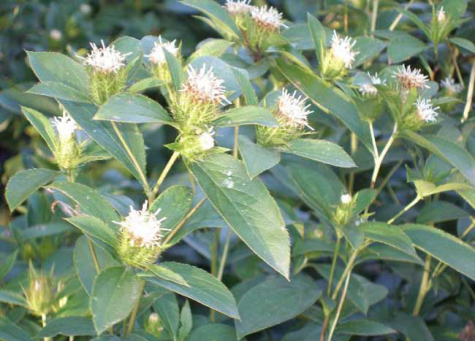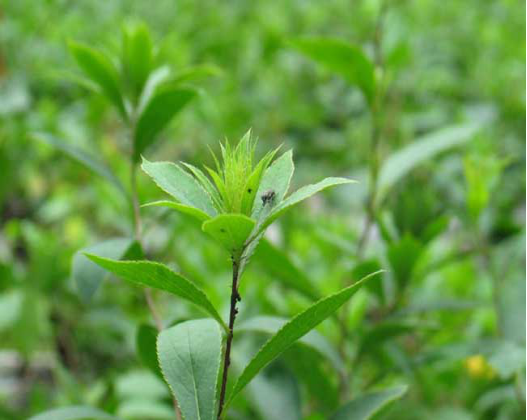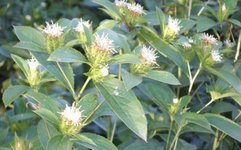
Click
Follow Yaoshou Agriculture
Follow Us

The Efficacy and Cultivation Techniques of Atractylodes
 Atractylodes (Cāngzhú) is a perennial herbaceous plant of the Asteraceae family. Its rhizome is used in medicine for its effects of drying dampness, transforming turbidity, and alleviating pain. It has many medicinal names, such as Han Cāngzhú and Máo Cāngzhú, but these can generally be divided into two main categories: Northern Atractylodes (Běi Cāngzhú) and Southern Atractylodes (Nán Cāngzhú).
Atractylodes (Cāngzhú) is a perennial herbaceous plant of the Asteraceae family. Its rhizome is used in medicine for its effects of drying dampness, transforming turbidity, and alleviating pain. It has many medicinal names, such as Han Cāngzhú and Máo Cāngzhú, but these can generally be divided into two main categories: Northern Atractylodes (Běi Cāngzhú) and Southern Atractylodes (Nán Cāngzhú).

Atractylodes is a highly regarded herb; Baopuzi refers to it as “Mountain Essence,” while Li Shizhen calls it “Immortal Herb,” and the “Han Medicine Examination” refers to it as “Heavenly Essence.” It dispels cold and dampness; a decoction of Atractylodes is truly miraculous! It can disperse wind, cold, and dampness from the exterior, as well as warm and strengthen the spleen and stomach internally. It can both release the exterior and tonify the spleen, making it unique. The “Pearl Bag” states that Atractylodes can strengthen the stomach and calm the spleen, and it is essential for eliminating dampness and swelling. Many people who visit a TCM practitioner are often told they have “heavy dampness.” If cold and dampness are allowed to roam freely in the body, what consequences might arise? Level one cold dampness: on the skin, causing itching and eczema; level two cold dampness: in the muscles, leading to soreness, fatigue, and heaviness, such as in the shoulders and neck; level three cold dampness: in the bones, resulting in bone cold dampness, periarthritis, cervical spondylosis, shoulder pain, stiffness, low back pain, rheumatic arthritis, and joint pain during weather changes. Atractylodes has a fragrant aroma; all aromatic herbs have a significant characteristic: they awaken the spleen. A tea made from Atractylodes can not only treat diarrhea but also address stagnant fluids in the stomach, even alleviating dizziness caused by damp turbidity.
Cultivation Techniques of Atractylodes


Atractylodes commonly grows wild on the shady slopes of low mountains, in sparse forests, and among shrubs and grasses. It has a strong vitality and can be cultivated in barren mountains, slopes, and poor soil, but it grows best in well-drained, low groundwater level, loose, humus-rich sandy loam. It is sensitive to waterlogging; if submerged, the roots are prone to rot, so low-lying, waterlogged areas are unsuitable for planting. 1. Site Selection and Preparation: Choose deep, well-drained, loose, fertile soil with ample sunlight, such as loam, sandy loam, or humus-rich soil for planting. Apply 2000 kg of farmyard manure per mu, typically using the high bed technique. 2. Thinning and Planting: When Atractylodes seedlings reach 5-6 cm in height, thin them. When they reach 10-15 cm, plant them at a spacing of 15-20 cm between plants and 25 cm between rows. For hole planting, leave 2-3 seedlings per hole, with a total of 12,000-15,000 seedlings per mu. 3. Cultivation and Weeding: During the seedling stage, regularly weed and lightly cultivate the soil. After transplanting, perform 3-4 weeding and cultivation sessions each year, typically loosening the soil every two months, which can be done simultaneously with fertilization. 4. Timely Watering: Keep the soil moist before and after germination to facilitate seedling growth. Water immediately after the soil thaws in early spring to protect seedlings, and water promptly during dry spells. Generally, no further watering is needed once the plants are established. 5. Reasonable Fertilization: During the seedling stage, apply 2000 kg of well-rotted human and animal manure per mu. In June and July, apply 2500-3000 kg of well-rotted human manure along with 15 kg of superphosphate. In October, open furrows between rows to apply well-rotted farmyard manure or compost, followed by watering and covering with soil. 6. Bud Removal for Seed Production: In commercial fields, remove flower buds promptly during the budding stage to concentrate nutrients for the growth of underground rhizomes. For seed production fields, select loose, fertile land and healthy, disease-free plants, appropriately thinning flowers and buds to cultivate quality seeds and seedlings. 7. Timely Harvesting: Atractylodes can be harvested 3-4 years after sowing or 2-3 years after transplanting. In spring or autumn (October-November), when the above-ground stems and leaves are dry, choose a sunny day to dig up the rhizomes. Shake off the soil from the harvested rhizomes, remove residual stems, and dry or bake them before removing the fibrous roots.

Pest and Disease Control for Atractylodes


1. Root Rot Disease: Ensure proper drainage by opening furrows. Immediately remove diseased plants. Use 50% bactericide powder at a dilution of 1000 times, or 1% lime water for irrigation, or spray with 50% thiophanate-methyl at a dilution of 800 times.2. Aphids: [Control] Use 50% chlorpyrifos emulsion at a dilution of 1000 times, or 50% imidacloprid wettable powder at a dilution of 3000 times, or 2.5% abamectin emulsion at a dilution of 3000 times for spraying, or use a mixture of tobacco and lime water at a ratio of 1:1:10 for control.
3. Soil-borne Pests: Use 80% dichlorvos or 50% phoxim mixed with water for root drenching, or mix 50% phoxim emulsion with fine sand for application.
Scan the code

Attention

